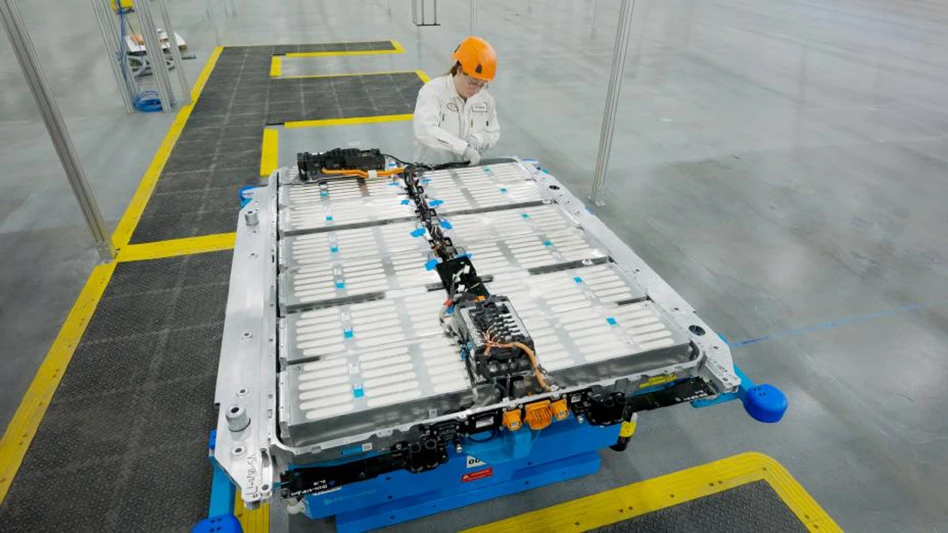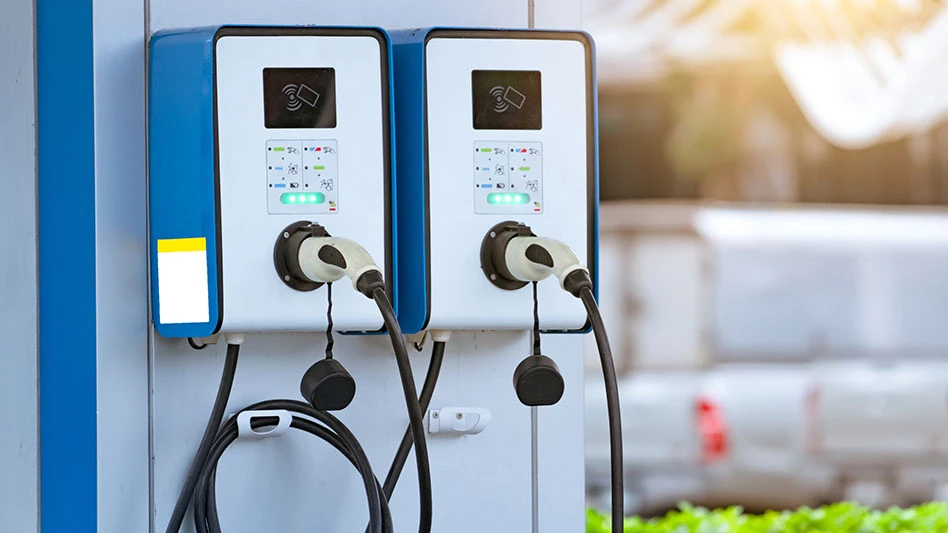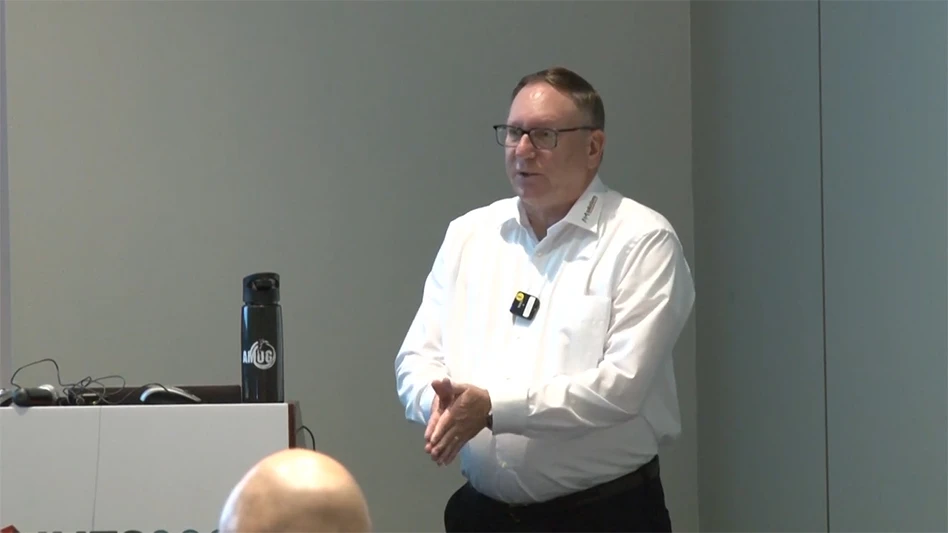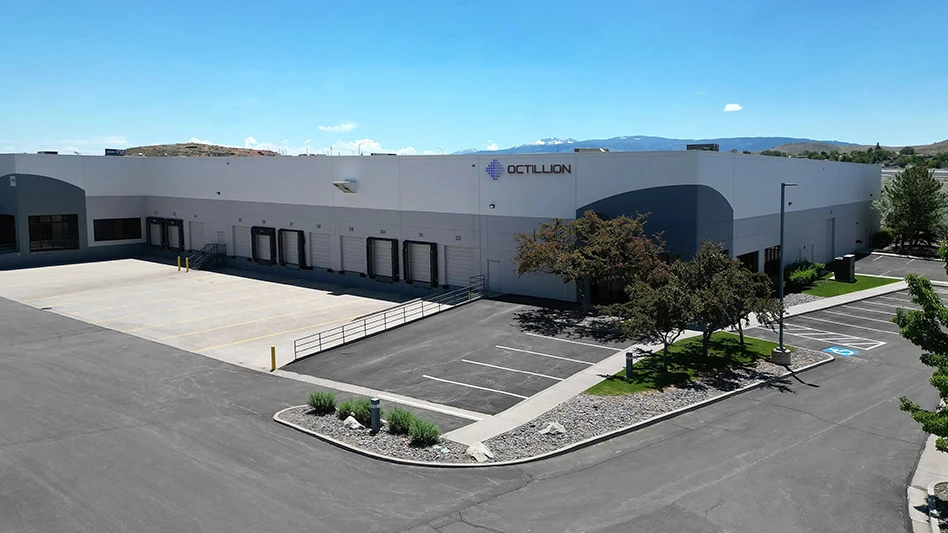
Honeywell
Strong demand for electric vehicle (EV) batteries is spurring the need to safely increase manufacturing capacity despite the inherent challenges of producing and charging batteries, which can increase the risk of fire and explosion.
To safely gear up for the increase in EV and battery production required, manufacturing facilities should consider implementing advanced detection systems that can identify smoke at the earliest possible stages.
Given this high-volume production of EV batteries, the use of early smoke detection systems has emerged as a best practice option in the industry to reduce the risk of fire incidents. These addressable systems work to quickly detect incipient smoke from a fire and pinpoint the exact location, delivering an early warning to provide improved staff safety, operational continuity, and increased asset protection. Modern fire detection systems also facilitate control and verification, streamline installation and maintenance, and minimize false alarms.
These capabilities are particularly important when manufacturing lithium-ion (Li-ion) batteries, which are commonly used in EVs. Li-ion batteries can release flammable, toxic gases when failing or overheating, which can spark a fast-spreading fire that is extremely difficult to extinguish.
Adding to the danger, Li-ion batteries can cause serious fires or even explode if overcharged, damaged, or incorrectly handled. When one cell in a battery fails, it can trigger a chain reaction involving nearby cells and batteries, generating excessive heat and causing an extremely hazardous cascading effect called thermal runaway. Once a battery cell catches fire, it has reached a full state of thermal runaway. The chemical reaction will continue until the combustible material is expended, fueling the fire into a potentially catastrophic event.
Resolving battery manufacturing challenges
Due to the unique challenges present in Li-ion EV battery manufacturing plants, standard smoke detection and fire suppression equipment is often not sufficient to address the risk of fire. Instead, advanced, performance-based, industrial-grade designs and systems are often required to minimize thermal runaway, accommodate different ceiling levels and the difficulties inherent in the various production stages of EV batteries.
“Since EV battery manufacturing is a relatively new market, a lot of the codes have not fully caught up. At this point, we are developing smoke detection and fire suppression methods that satisfy performance-based design,” says Bob Stieb, sales engineer at 3S Incorporated, a provider of industrial and commercial fire protection systems since 1987 with a focus on high-end detection and suppression systems for battery manufacturing plants. Based in Harrison, Ohio, the special hazard fire protection integration firm serves the automotive, power, steel, and high hazard industries in the U.S. and globally.
Performance-based design is an International Code Council (ICC) accepted alternative that allows ‘alternate materials and methods’ that offer equivalent or superior fire safety performance to the established codes.
Given the potential for thermal runaway events in Li-ion battery manufacturing, sophisticated fire detection and suppression techniques are needed. Once a Li-ion battery goes into thermal runaway, it cannot be stopped in that cell. That’s why it is critical to halt the propagation of heat and thermal runaway to adjoining cells as quickly as possible with early smoke detection and specialized fire suppression.
According to Stieb, who has a B.S. in electrical engineering and more than three decades of fire protection business experience, certain structural and processing characteristics of battery manufacturing facilities also make smoke detection and fire prevention more difficult.
“Battery manufacturing plants today are often large with high ceilings and storage racks due to the processes involved. The challenge is that typical ceiling-mounted spot detectors have difficulty detecting smoke,” says Stieb.
In battery manufacturing facilities, structures can be up to 700 feet long with 65-foot ceilings and 50-foot false ceilings, according to Stieb. He adds that some areas have multiple ceiling heights, “almost like a room within a room,” which further complicates smoke detection.
“In the plants, the formation area has the greatest risk of fire. The point where they charge the batteries is often where problems can occur,” says Stieb. Battery formation is the process of performing the initial charge/discharge operation on the battery cell. During this stage, special electrochemical solid electrolyte interphase (SEI) is formed at the electrode, mainly on an anode.
Additionally, ambient temperature in a battery manufacturing facility can fluctuate wildly. Extreme temperature changes can be problematic for smoke detection systems that rely on conventional air sampling methods.
Stieb recounts how 3S approached the challenge of implementing superior smoke detection at a 2.4 million sq. ft. manufacturing plant making Li-ion batteries for EVs in Georgia.
The project required installing a comprehensive fire protection system at the plant in two phases, with about 20 buildings in each phase. A higher level of fire protection was implemented at three battery manufacturing buildings that were involved with electrodes, assembly, and formation, according to Stieb.
Initially, a fire-protection-engineer drafted design criteria and specified the use of an air aspirating detection system. After conducting a performance-based design review, Stieb and 3S selected a combination of two intelligent, aspirating, smoke detection systems: The VESDA-E VEU and VESDA-E VEP by Honeywell, a leading manufacturer of commercial building fire and life safety systems. The aspirating detection systems draw air samples in a continuous process through holes.
The VESDA-E VEU analyzes the air in a flare detection chamber that uses a short wavelength laser, a CMOS (complementary-metal-oxide-semiconductor) imager, and multiple photodiodes that can distinguish between smoke and dust, minimizing false alarms. With the VEP, the flare detection chamber also provides very early warning smoke detection, fewer nuisance alarms, higher stability, and increased longevity.
In both VESDA systems, the smoke detectors are seamlessly integrated on the signaling line circuit (SLC) loop with NOTIFIER by Honeywell fire alarm control panels.

chamber that uses a short wavelength laser, a CMOS
imager, and multiple photodiodes that can distinguish
between smoke and dust, minimizing false alarms.
“In our experience, the VEU and VEP are the best VESDA devices out there for high ceilings, which is an issue in battery manufacturing plants," says Stieb. "As we draw ambient air into the pipe, we can sample the air for smoke even at high or different ceiling levels.”
Compared to other aspirating technologies, the VESDA systems work to help reduce installation and maintenance costs by allowing long pipe runs up to 1,310ft (400m) and branched pipe networks up to 2,625ft (800m) to extend detector coverage. This reduces the number of detectors required to protect a single fire zone in a manufacturing facility.
3S implemented addressable versions of the VESDA detectors. As multi-channel, addressable systems, the central detection units can identify the sampling point that is detecting smoke, to expedite a response.
“Addressability in a system is important to quickly identify the source of a fire, particularly when there are various buildings and processes in the manufacturing plant,” says Stieb. “The VESDA systems are integrated with the signaling line circuit and can communicate directly with the NOTIFIER NFS2-3030 control panels that are networked throughout the plant.”
The NFS2-3030 intelligent fire alarm control panel supports over 3,000 intelligent devices on ten signaling line circuits, which simplifies protecting large scale applications like EV battery manufacturing.
Integration of the intelligent VESDA units with the SLC network also enables multiple sensitivity modes with four alarm levels to assign the most appropriate response.
“Using the SLC connection, the system operator can review real-time status information such as alarms and faults,” says Khaleel Rehman, director of business development, Honeywell. “The system operator can put an intelligent detector into service mode, reset airflow baselines or configure alarm thresholds based on routine changes in the environment.”
Having remote access to real-time status information, such as alarms and faults, is particularly important when physical access is restricted due to essentially continuous production. The ability to remotely program from a safe distance as required also helps promote system reliability.

very early warning smoke detection, fewer nuisance
alarms, higher stability, and increased longevity.
The VESDA devices were chosen to tolerate the high ambient temperatures involved with battery manufacturing since the systems are ruggedly industrial grade and designed for longevity. Additionally, VESDA VEP devices have Hazardous Area Approval for FM Class 1, Division 2, Group A, B, C, D applications and can be customized.
Even with these benefits, one of the primary advantages of an aspirating smoke detector system is its ease of maintenance, inspection, and servicing. This is particularly important in areas where access is restricted for safety or security reasons, given that NFPA regulations mandate annual inspection and testing of each unit for many facilities. This time-consuming process requires a fire alarm contractor to introduce smoke directly into the detector and verify that it functions properly.
With all its sampling points in one location, an aspirating smoke detection system can be tested and maintained in a protected room outside restricted areas.
3S has successfully installed the VESDA systems in two phases at the battery manufacturing facility. Both the performance and feedback have been positive, according to Stieb.
“As EV battery manufacturing ramps up along with other high-value, high-risk technology projects, we expect that VESDA systems will play a key role in controlling the fire risk,” says Stieb.
Latest from EV Design & Manufacturing
- Toyota to begin shipments of electric vehicle batteries from North Carolina facility in April
- Multilayer ceramic capacitor developed for LiDAR applications
- Riding the current of the solid-state battery movement
- New version of online simulation software dedicated to supercapacitors
- Cutting Edge Innovations: Maximizing Productivity and Best Practices with Superabrasives
- Research yields encouraging data on lithium-ion battery recycling
- Waters Corporation introduces mechanical testing instrument for polymers and composites
- Practical and Affordable Factory Digital Twins for SMEs





